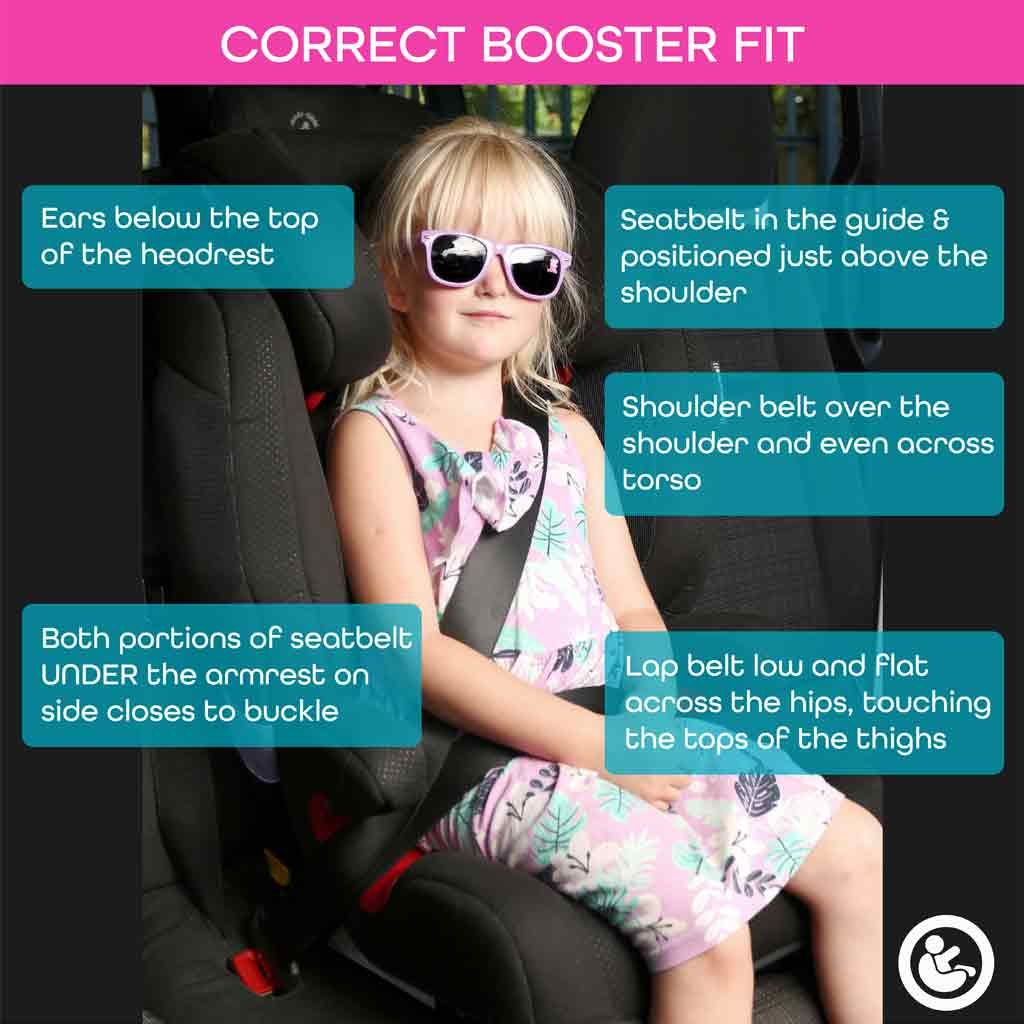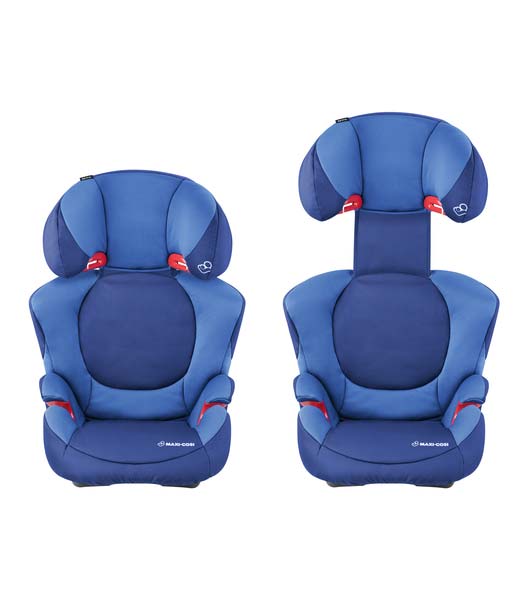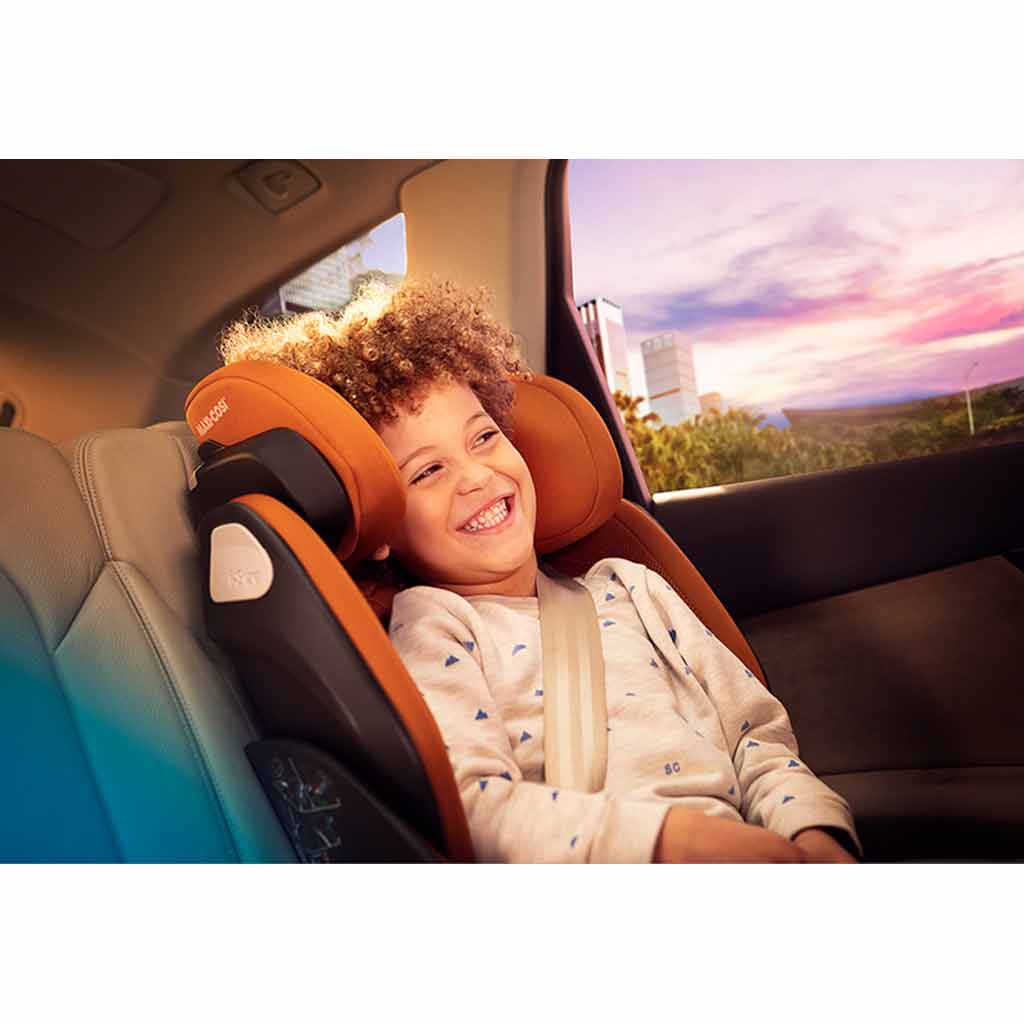WHAT IS The law about boosters in South Africa?
In South Africa, there is still an alarmingly high majority of children who are not suitably restrained in car seats or booster seats, or even just a seatbelt.
An informal study conducted by the AA found that only 7% of the children they observed were restrained in car seats/boosters. Thankfully, education and awareness about the vital need for car seats for babies and toddlers is slowly increasing.
On 1 May 2015, a new law came into effect that makes it illegal to for an infant (a child under 3 years) to travel without being strapped into a suitable car seat. Commuters using public transport are exempt from this law.
Regrettably, the Law does not require children over the age of 3 to travel in a car seat or booster. In South Africa, children over 3 years are required to be strapped into either a car seat/booster if one is available, or with a seat belt at all times. The Law describes a child as a person between the ages of three and fourteen except where such a person is taller than 1.5 meters.
The driver is responsible for ensuring that any infant under 3 years is restrained in a car seat and that any child under the age of 14 must be using a seatbelt.
How long should children use boosters?
Although the Law does not differentiate between a child being strapped with a normal seat belt and a child car seat/booster, crash testing shows that children under 1.5m are MUCH safer in car seats or boosters.
Seatbelts are designed to protect adults over 1.5m tall, and can cause severe or even fatal injuries in children. Children strapped with just a seatbelt before they are tall enough to achieve a safe seatbelt fit were found to be 3 times more likely to be injured in a crash than adults.
It is therefore recommended that children use boosters until they reach 1.5m and pass the 5-step test. For most children, this is only when they are 10-12 years old.
 Photo credit: The Car Seat Lady
Photo credit: The Car Seat LadyWhat happens to a child without a booster ?
Children can suffer serious neck and head injuries and perforated intestines when using a seatbelt alone. This pattern of injury has become known as “seat belt syndrome” by doctors who regularly face this pattern of injury in children.
 Photo credit: Cell Code
Photo credit: Cell CodeIn a collision, the weight of the child is multiplied by the speed the vehicle is traveling. As an example, an 18kg child traveling at 60km per hour would require 1080kg of restraining force to keep that child restrained during the crash.
An improperly restrained or unrestrained child would be propelled into the back of the front seat, the dash or windshield, another passenger or be thrown out of the vehicle via a window or sun-roof.
A child who is too small for the seat belt causes the lap portion of the seat belt to move up to their abdomen. If they are in a lap-only belt or put the shoulder portion behind them or under their arm; they lose upper body restraint causing abdominal, spinal and/or head injuries.
"The body is propelled forward, jack-knifing over the lap-belt causing serious internal injuries. Then the head strikes the back of the front seat, rolling backward as the body continues in its downward arc, breaking the neck. The spine stretches and the spinal cord can be damaged. The 18kg child in the example would sustain approximately 1080kg of crushing force against their abdomen
The child could sustain a lacerated liver, spleen or bowel, a ruptured bladder, and internal bleeding. Many of these internal injury symptoms don’t present themselves at the time of injury. An occult bleed may not be detected until hours after a crash." (SafeRide4Kids)
When should my child move to a booster ?
When your child is close to outgrowing the toddler seat, it is time to start considering a booster seat. A toddler car seat harness is outgrown when the maximum weight or height is reached. For most toddler car seats sold in South Africa, toddler mode (Group I) is outgrown at 18kg or approximately 105cm.

iSize car seats have defined height limits. Toddler car seats that don't have specified height limits are considered outgrown by height when the straps are at the highest setting but start to dip below the shoulders and/or when the child's eyes are level with the top of the headrest. It is not safe to continue using the harness on a child who has reached the height/weight limits, as there is risk of it failing in a crash .
BOOSTER READINESS
A child needs to be at least 15kg and 100cm tall to fit most boosters. 4 years is the minimum recommended age to move to a booster. However, we advocate waiting as long as possible to move a child to a booster. If your child still fits the toddler seat’s height and weight limits, don’t be in a rush to move to a booster.
It is important that a child is mature enough to sit still and upright at all times in a booster, before they are safe to travel in one. A booster does not restrain a child like a 5-point harnessed car seat does, which means they have much more freedom to climb out a booster, unbuckle themselves and get themselves into dangerous positions.
"If a child is wiggling out of position at the time of a crash, with the seatbelt poorly fitted across the body, that leaves them vulnerable to serious injury. That means the decision to move from harness to booster is rooted in the child’s maturity. The ability to sit correctly for the entire ride, 100% of the time, happens somewhere past age 5 for most kids, and not until 6 or 7 for many others." (CSFTL)
Once a child has outgrown their harnessed car seat and is booster ready, there isn’t any scientific information that proves that a harness is safer than a properly used booster seat. The key is the booster being properly used: where the child is of appropriate age and the belt is positioned properly.

- Be at least 4 years old.
- Meet the weight minimum of 15kg
- Meet the height minimum of 100cm
- Be responsible enough to sit properly 100% of the time, even while asleep.
- Have a safe belt fit.
WHAT IS A SAFE SEATBELT FIT WITH A BOOSTER?
A Safe Seatbelt Fit:
- Ears should be below the top of the headrest
- Seatbelt in the guide and positioned just above the shoulder (not cutting in the neck) and even across the torso.
- Both portions of seatbelt UNDER the armrest on side closest to buckle
- Lap belt should be low and flat across the hips, touching the tops of the thigh NOT over the abdomen

BOOSTER TRAINING
Ideally, you should start booster training a month or two before your child is likely to outgrow the toddler seat. This gives you adequate time to properly assess whether or not your child is indeed mature enough to cope with the responsibility of traveling in a booster.
It is impossible to assess how your child will behave in a booster if they have only ever been pinned down in a harnessed toddler seat. Start booster training for short distances in a borrowed highback booster for a few weeks, if you do not yet have one.
It is helpful to buy a small mirror to stick on the windscreen so that you can keep an eye on your child (when the vehicle is stopped and it is safe to do so!). If you find that your child wiggles around, unbuckles themselves, plays with the seatbelt, leans forward or to the side, he/she may not yet be ready for a booster seat.
IF YOUR CHILD IS NOT BOOSTER READY
Until recently, there were very few, rather expensive options for children who had outgrown toddler seats but were not yet booster ready. Fortunately, manufacturers have made more 25kg harnessed toddler car seats. For children who are bigger than average or who are not yet ready to move to a booster, there are 11 car seats that harness to 25kg:
- BeSafe iZi Plus X1 is rear facing only and installs with seatbelt. It scores “good” for safety on the Swedish Plus Test, which is the most stringent test to pass. Rear facing is safest for children under 4 years old.
- Volvo(Britax) Maxway. It is also rear facing only to 25kg. It scores “good” for safety
- Axkid Minikid 2 is also rearfacing only up to 25kg or 125cm. It has been Swedish Plus tested (the most stringent crash test to pass). It installs with seatbelt and self-adjusting lower tether anchors.
- Axkid One Plus is also a rearfacing only seat up to 23kg or 125cm. It is THE ONLY extended rearfacing car seat in the world that installs with isofix only. It was a test winner and scores "good" for safety by ADAC as well as in the Swedish Plus test.
- Axkid Move is also rearfacing only up to 25kg or 125cm. It has been Swedish Plus tested (the most stringent crash test to pass). It installs with seatbelt and lower tether anchors.
- Axkid Rekid is also rearfacing only up to 25kg or 125cm. It can be installed with isofix and lower tether anchors until 18kg and then must be installed with seatbelt and lower tether anchors until 25kgs. It has also been Swedish Plus tested.
- Joie Bold. It forward faces with harness to 25kg then converts to a highback booster to 36kg. It scores “average/satisfactory" for safety It installs with seatbelt, isofix AND top tether anchor, so may not fit all cars.
- Safeway Elegance. It forward faces to 25kg then converts to a highback booster to 36kg. No safety reviews available. It installs with seatbelt and top tether anchor, so may not fit all cars. There are no safety reviews available.
- Chicco Seat Up 012. It rear faces to 13kg, forward faces to 25kg and booster to 36kg. It scores “average” for safety. It installs with seatbelt and top tether anchor, so may not fit all cars
- Safeway Polar. It rear faces to 18kg and forward faces to 25kg then converts to a highback booster to 36kg. No safety reviews available. It installs with isofix, seatbelt and top tether anchor, so may not fit all cars. There are no safety reviews available.
- Maxi Cosi Beryl. Rear faces to 13kg and forward faces to 25kg. It installs with isoifix OR seatbelt. It scores average for safety. The harness height may not last much longer than 105cm.
How to choose the safest booster
If your child manages well with the responsibility of a booster seat, here are the points to consider before buying:
- Do your research. Check ADAC safety reviews, available in the booster seat photo album on Car Seat Support South Africa on FaceBook. These reviews give scores on how each booster performed during their independent, unbiased crash testing, done at higher speeds than the compulsory ECE regulations crash testing. Choosing a booster that has good safety ratings gives you reassurance that your child has optimal protection.
- Fit your child to ensure your child gets a safe seatbelt fit in it.
- Choose a booster that has a height adjustable headrest and has the seatbelt guides attached to the headrest, NOT the shell of the booster. There are many multistage seats that cannot be adjusted as your child grows, and therefore cannot provide safe seatbelt fits across your child’s body. Without a height adjustable headrest, a child’s head has no side impact protection when the head protrudes above the shell. Also check that it is possible to get the lapbelt correctly positioned over the hips.
 Booster with height adjustable head rest and seatbelt guides
Booster with height adjustable head rest and seatbelt guides
BACKLESS BOOSTER vs Highback boosters
A highback booster has a backrest and a headrest. This provides side impact protection and if the seatbelt guides are attached to the headrest, it allows you to adjust the position of the shoulderbelt across your child’s torso.
A backless booster, also known as a booster cushion, has no backrest. It therefore provides no head or side impact protection and it is not possible to adjust the shoulderbelt to get a safe fit. Backless boosters should not be used for children under 22kg and 125cm. However, it is safer to use a 36kg highback booster all the way to 1.5m.
In the UK, Britax launched a campaign “Bin the Booster Cushion”, urging parents to rather use highback boosters. Both a booster cushion and a highback booster were put through a simulated frontal collision, with the highback booster providing far more support. The child-sized dummy in the booster cushion was violently thrown forward and hits its head on the side of the vehicle, dangerously freeing itself from the upper belt, whereas the dummy placed in the highback booster is kept in place and protected by the side wings and headrest.
It is recommended that children travel in the high back booster if they are the correct weight and height for it, and fit comfortably within the headrest. A high back booster provides additional head, neck and torso protection. (Good Egg Car Safety)

In short, children over 4 years/18kg/105cm and under 1.5m are best protected by highback boosters.
SAFEST BOOSTERS
We sell the highest safety rated boosters at Precious Cargo

Booster Seat Collection
Click the button below to view our collection of the highest safety rated boosters that we sell
BUY NOWREFERENCES
https://csftl.org/harness-or-booster/
https://saferide4kids.com/blog/seat-belt-syndrome/
https://www.pushchairexpert.com/en/news/is-it-time-to-bin-the-booster/
http://erfmission.com/high-back-boosters-can-be-dangerous/
https://www.britax-roemer.co.uk/media-press/press-releases?article=PressRelease-BinBoosterCampaign-0715
https://www.goodeggcarsafety.com/blog/tags/booster-seats.html
